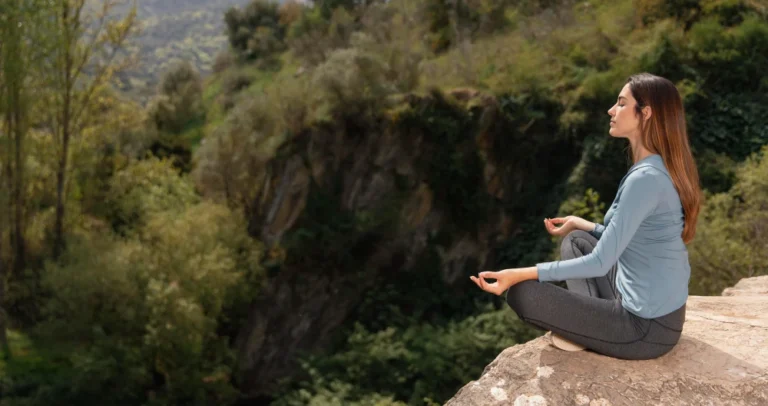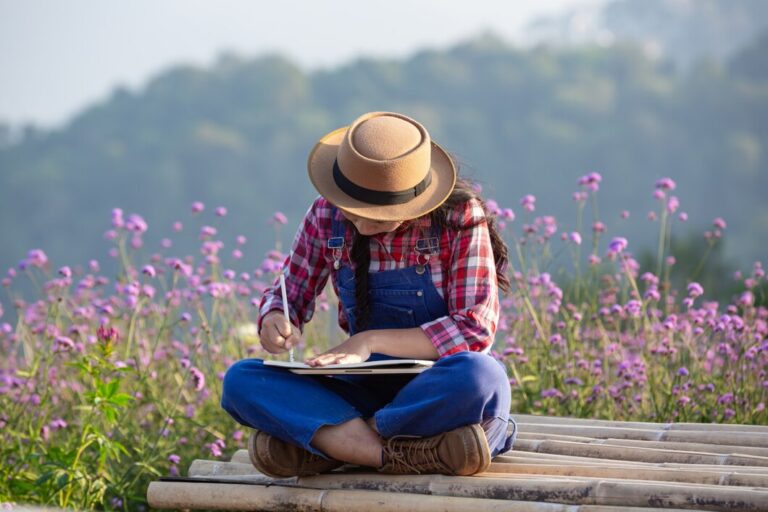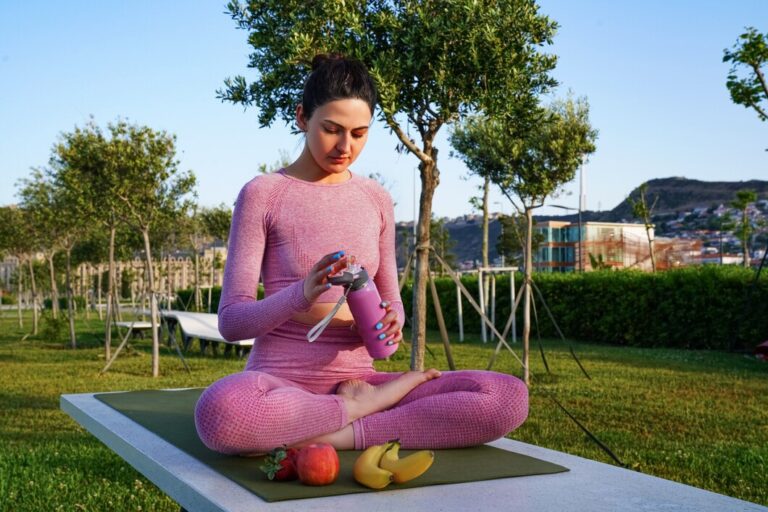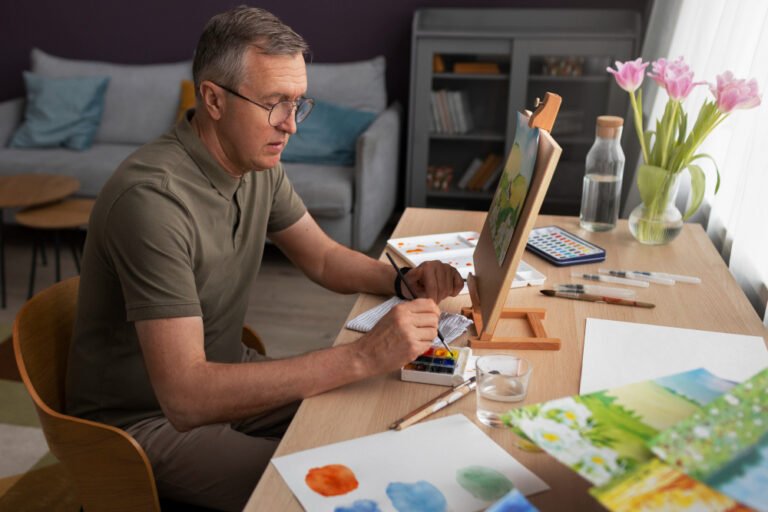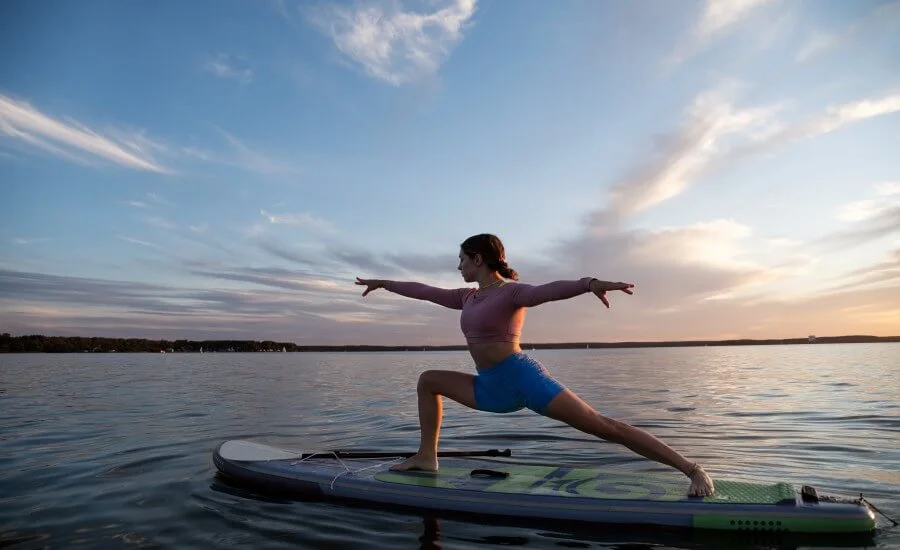
The first time you step onto a paddleboard with the intention of doing yoga, there’s an undeniable wobble. The solid ground you rely on in the studio is replaced by the fluid, shifting surface of water. Your focus narrows instantly – engage the core, find your center, breathe. Then, something magical happens. As you tentatively move into a simple pose, the gentle lapping of water against the board, the warmth of the sun on your skin, the vast expanse of sky above – it all coalesces into a unique state of heightened presence. This is the captivating world of Stand-up Paddleboard Yoga: Balancing Body and Mind on Water.
Forget crowded studios and predictable routines. SUP yoga takes your practice into the heart of nature, offering a dynamic blend of physical challenge, mental focus, and profound connection with the elements. It’s a form of mindful travel where the journey takes place on your floating mat, inviting you to find stillness amidst gentle motion and strength through instability.
This guide explores the transformative benefits of SUP yoga, how beginners can dip their toes in (perhaps literally!), the mindful aspects of the practice, and why disconnecting from technology on the water enhances this unique experience.
What is SUP Yoga? Where Mat Meets Water

Simply put, SUP Yoga is the practice of performing yoga postures (asanas) on a stand-up paddleboard while floating on calm water, such as a lake, calm river, sheltered bay, or even a large pool. It fuses the physical and meditative disciplines of yoga with the balance and core engagement required for paddleboarding.
Instead of a solid floor, your foundation is constantly making micro-adjustments to the water’s movement. This requires a different kind of focus and engages muscles, particularly core stabilizers, in a new way. Poses often need modification – perhaps a wider stance for stability or keeping knees bent in lunges.
The practice becomes less about achieving perfect alignment according to external ideals and more about finding your unique balance and connection in that specific moment, on that specific body of water. It transforms your board into a floating yoga mat, an island of presence amidst the gentle undulations of nature.
Making Waves for Wellbeing: Why Practice Yoga on Water?

Taking your yoga practice off solid ground and onto the water offers a unique set of benefits that enhance both physical strength and mental well-being.
- Enhanced Balance & Proprioception: The unstable surface of the water constantly challenges your balance, forcing your body to make continuous micro-adjustments. This dramatically improves proprioception (your sense of body position in space) and overall balance skills, far more intensely than practicing on land.
- Incredible Core Workout: To stay stable on the board while moving through poses, you must constantly engage your core muscles. Nearly every pose becomes a core strengthener, leading to improved stability and posture both on and off the board.
- Heightened Mindfulness & Focus: You simply cannot zone out during SUP yoga. The need to maintain balance demands complete presence and focus on your breath, your body’s alignment, and the subtle shifts of the board and water. It “gently forces” mindfulness.
- Deep Connection with Nature: Practicing outdoors, surrounded by water, sky, and potentially wildlife (birds flying overhead, fish swimming below), fosters a profound connection to the natural world that studio environments cannot replicate. This connection itself is deeply therapeutic and grounding.
- Stress Relief & Calm: Combining the meditative aspects of yoga with the scientifically proven calming effects of being near water (the “Blue Mind” effect) creates a powerful stress-relieving experience. The gentle rocking, the sounds of nature, the open air – it’s a recipe for tranquility.
- Fun & Playfulness: Let’s be honest – there’s a playful element to SUP yoga! The possibility of falling in encourages letting go of perfectionism and embracing the experience with a sense of lightness and humor.
- Low Impact Workout: While challenging for balance and core, the practice itself is low-impact on joints.
SUP yoga offers a holistic workout, engaging mind, body, and spirit in a uniquely refreshing and rewarding way.
Finding Your Float: Getting Started & Beginner Poses

Intrigued but feeling a bit intimidated? SUP yoga is more accessible than it looks! Here’s how to get started:
Gear Up:
- The Board: Beginners should opt for a wider, longer, and thicker board specifically designed for yoga or general all-around use, as these offer maximum stability. Inflatable SUPs are often great choices as they are stable and slightly softer to fall on.
- The Paddle: You’ll use this to get to your practice spot. Ensure it’s adjusted to the correct height (generally 6-10 inches taller than you).
- Safety Essentials: A Personal Flotation Device (PFD) or life jacket is highly recommended, especially for beginners or if required by local regulations. A SUP leash connecting you to your board is also crucial. An anchor can be helpful to prevent drifting during your practice.
Finding Your Feet (or Seat!):
- Start in calm, shallow water. Practice getting on and off the board gracefully.
- Begin by kneeling or sitting on the board to get a feel for its stability. Find the center point (often marked by the handle) as this is the most stable area.
- Practice gentle paddling first to get comfortable maneuvering.
Beginner-Friendly Poses (Start Seated/Kneeling):
- Sukhasana (Easy Pose): Sit cross-legged near the center of the board. Lengthen your spine, rest hands on knees, and focus on your breath and the gentle rocking.
- Balasana (Child’s Pose): Kneel, bring big toes together, sink hips back towards heels, and rest forehead on the board, arms extended forward or alongside body. A great resting pose.
- Marjaryasana/Bitilasana (Cat-Cow): Start on hands and knees (hands under shoulders, knees under hips). Inhale, drop belly, lift gaze (Cow); exhale, round spine, tuck chin (Cat). Move slowly with breath, feeling the core engage for stability.
- Adho Mukha Svanasana (Downward-Facing Dog – Modified): From hands and knees, tuck toes, lift hips up and back. Keep knees generously bent initially. Press hands firmly into the board, engage core. Focus on length in the spine.
- Low Lunge / Kneeling Warrior Variations: From hands and knees, step one foot forward between hands. Keep back knee down for stability initially. Explore gentle lunges or twists.
Key Tip: Move SLOWLY – about half the speed you would on land. Keep your gaze steady on a fixed point on the horizon or the front of your board to aid balance. Engage your core throughout!
The Mindful Current: Presence, Breath & Balance on the Board

The true essence of SUP yoga lies in the heightened state of mindfulness it demands. Unlike practicing on a stable mat where your mind might wander, the constantly adjusting surface of the water requires your full, non-judgmental attention in the present moment.
Focus Becomes Non-Negotiable: Every subtle shift in weight, every breath, every ripple of water affects your balance. You are compelled to focus intently on the connection between your body, the board, and the water. Distraction often leads directly to a splash! This forced focus trains your attention muscle like few other activities can.
Breath as Anchor: Your breath becomes an even more critical anchor. Smooth, steady breathing helps calm the nervous system, which in turn aids balance. Coordinating movement with breath, a core tenet of yoga, feels even more vital and immediate on the board.
Body Awareness Amplified: You become acutely aware of your weight distribution, core engagement, and subtle muscle adjustments. Every pose offers instant feedback. You learn to listen deeply to your body’s signals for stability and alignment.
Acceptance of Impermanence: The water is constantly changing, and so is your balance within each pose. SUP yoga teaches acceptance of this impermanence and the ability to flow with change, rather than resisting it. Falling in becomes part of the practice – a lesson in letting go and non-attachment.
This constant interplay between focus, breath, body, and the environment creates a moving meditation, a state of flow where external worries often dissolve into the immediate task of finding balance.
Unplugged Flow: Enhancing Presence on Your Board

To fully embrace the mindful benefits of SUP yoga, leaving your digital distractions on the shore is highly recommended, if not essential. Creating an unplugged experience allows you to immerse yourself completely in the practice and the natural environment.
Why Disconnect?
- Preserving Focus: Even the buzz of a phone in a waterproof bag can pull your attention away from the delicate balance required. True focus demands minimizing potential interruptions.
- Deepening Nature Connection: Without a screen mediating your experience, you can fully tune into the sounds of nature – birdsong, lapping water, wind – and the visual beauty surrounding you. This enhances the therapeutic benefits.
- Internal Awareness: Disconnecting from external input allows you to turn your awareness inward, paying closer attention to your breath, bodily sensations, and emotional state during the practice.
- Safety: Fumbling with a phone while trying to balance in a yoga pose is simply unsafe. Focus needs to be on stability and awareness of your surroundings.
- Embracing Simplicity: SUP yoga connects us to fundamental elements – body, breath, water, sky. Leaving technology behind honors this simplicity and allows for a purer experience.
Tips for an Unplugged Flow:
- Leave phones, smartwatches, and cameras securely on land.
- If you need music, consider the natural soundscape first. If using music, use a waterproof speaker set up before you start, then leave it alone.
- Rely on your instructor’s cues (if in a class) or your own internal awareness and sequence knowledge.
- Use the time before and after your session for digital needs, keeping the time on the water dedicated to practice and presence.
Unplugging allows the water, the board, and your breath to be your only guides, fostering a deeper, more restorative flow state.
Stand-up Paddleboard Yoga: Balancing Body and Mind on Water

Stand-up Paddleboard Yoga is more than just a fitness trend; it’s a holistic practice that beautifully integrates physical challenge with mindful presence and nature connection. It calls us to find balance not just on the board, but within ourselves. The unstable surface acts as a powerful teacher, demanding focus, cultivating core strength, and heightening our awareness of breath and body in the present moment.
The fusion of yoga’s introspective quality with the dynamic, sensory-rich environment of being on the water creates a unique synergy. The need for physical stability fosters mental stillness. The connection with nature – the sun, the water, the air – grounds us and inspires awe.
The playful challenge encourages letting go of perfectionism and embracing the journey. Whether you seek a fun new workout, a deeper connection with nature, or a potent mindfulness practice, SUP yoga offers a compelling and rewarding path to balancing body and mind on the water.
Finding Your Studio on the Water: Safety & Logistics

Ready to give it a try? Here’s what you need to know about finding spots and staying safe:
Choosing a Location:
- Calm Waters are Key: Look for sheltered locations protected from strong winds, waves, and boat traffic. Lakes, calm rivers, quiet bays, lagoons, or even large swimming pools are ideal.
- Local Research: Search online for “SUP yoga classes + [your area]”. Check with local yoga studios, paddleboard rental shops, or watersports centers. In areas like Gujarat, explore possibilities on calm lakes such as Ajwa Lake near Vadodara, reservoirs like Sardar Sarovar (in designated calm zones), or sheltered coastal areas, ensuring conditions are suitable. Always verify safety and permissions locally.
- Weather Wise: Always check the weather forecast before heading out. Avoid strong winds, rain, or thunderstorms.
Finding Classes & Instructors:
- For beginners, taking a class with a certified SUP yoga instructor is highly recommended. They provide proper equipment, safety guidance, and pose modifications suitable for the water.
- Look for instructors certified in both yoga and SUP instruction/water safety (like PaddleFit or similar certifications).
Safety First:
- PFD & Leash: Wear a Personal Flotation Device (life vest) if you’re not a strong swimmer or if regulations require it. Always use a SUP leash connecting you to your board.
- Know How to Swim: Basic swimming ability is essential.
- Stay Hydrated & Sun Protected: Bring water and apply waterproof, reef-safe sunscreen. A hat and sunglasses are also wise.
- Inform Someone: Let someone know where you are going and when you expect to be back, especially if practicing alone.
- Listen to Your Body: Don’t push yourself into poses that feel overly unstable or risky. Modifications are key.
Prioritizing safety ensures your SUP yoga experience is both enjoyable and secure.
Common Concerns & Solutions for Aspiring SUP Yogis

It’s natural to have some apprehension before trying yoga on water!
Concern 1: “I’m terrified of falling in!”
- Solution: Falling is part of the process and often fun! Practice in warm, shallow water initially. Learn how to fall safely away from the board and how to easily get back on. Wear clothes you don’t mind getting wet. Embrace the splash – letting go of the fear of falling actually improves balance.
Concern 2: “I don’t have great balance / I’m not good at yoga.”
- Solution: SUP yoga is great for improving balance! Start with beginner classes focusing on simple, stable poses (seated, kneeling). Instructors offer modifications for all levels. It’s less about perfect poses and more about the experience and finding your stability.
Concern 3: “Do I need to be a strong swimmer?”
- Solution: You should be comfortable in the water and know basic swimming skills. Always wear a PFD if you are not a confident swimmer or if conditions warrant it. Classes are usually held in calm, relatively shallow water.
Concern 4: “I don’t have a paddleboard / Where can I even do this?”
- Solution: Start by taking classes – equipment is usually provided. Use online searches (“SUP yoga near me”) or check local water sports centers, yoga studios near water, or community recreation programs. Research calm local lakes, reservoirs, or sheltered coastal areas (like possibilities near Vadodara or elsewhere in Gujarat).
Concern 5: “It seems weather-dependent.”
- Solution: It is. Wind and waves make SUP yoga difficult and unsafe. Always check the forecast. Be prepared for classes to be cancelled or rescheduled due to weather. Flexibility is key.
Preparing for Your First SUP Yoga Session Checklist

Get ready to find your flow on the water with this checklist:
- Book a Beginner Class (Recommended): Find a certified instructor/studio. Confirm location, time, and what’s included (board, paddle, anchor, PFD).
- Check the Weather Forecast: Ensure conditions are calm and suitable.
- What to Wear: Comfortable, non-restrictive athletic wear that you don’t mind getting wet (swimsuit underneath optional). Avoid cotton. Neoprene layers if cold.
- Sun Protection: Apply waterproof, high-SPF sunscreen (reef-safe if applicable) before leaving home. Bring hat and sunglasses (with straps!).
- Hydration: Bring a reusable water bottle.
- Towel & Change of Clothes: For after your session (you might get wet!).
- Leave Valuables Securely on Shore: Especially non-waterproof electronics like phones. Consider a dry bag only if absolutely necessary and approved by instructor.
- Small Snack (Optional): For before or after, especially if you’re prone to motion sickness.
- Open Mind & Sense of Humor: Be ready to wobble, maybe fall, laugh, and embrace a new experience!
- Arrive Early: Give yourself time to check in, get oriented, and prepare without rushing.
Dive Into a Deeper SUP Yoga Practice

Stand-up Paddleboard Yoga offers a unique invitation: to step off solid ground, embrace instability, and find a deeper sense of balance, focus, and connection – all while immersed in the beauty of nature. It challenges the body, calms the mind, and nourishes the spirit. By taking your practice to the water and consciously leaving digital distractions behind, you create space for a truly present, playful, and profound experience.
You’re now familiar with the essence of SUP yoga, its myriad benefits, how to safely get started, and the importance of mindfulness and disconnection in enhancing the practice. Whether you’re a seasoned yogi seeking a new challenge or a beginner curious about blending movement and nature, SUP yoga holds incredible potential for transformation.
Are you ready to find your flow on the water? Seek out a class or a calm body of water. Step onto the board with an open mind and a willingness to wobble. Breathe deep, engage your core, fix your gaze, embrace the challenge, and don’t be afraid to make a splash. You might just discover a whole new dimension to your practice and a profound sense of peace floating between water and sky.
Tech-Free Activity Guide (Mindful SUP Yoga Flow – Sample Sequence)

This sample sequence focuses on stability and mindful connection, perfect for beginners enjoying an unplugged session (always prioritize safety and modify as needed):
- Arrival & Centering (Seated): Start seated in Sukhasana (Easy Pose) near the center of the board. Close your eyes or soften your gaze. Take several deep breaths, noticing the gentle rocking of the board and the sounds of the water/nature. Set an intention for presence.
- Gentle Warm-up (Seated/Kneeling):
- Seated Cat-Cow: Hands on knees, inhale to arch spine slightly (Cow), exhale to round gently (Cat). Coordinate with breath.
- Seated Twists: Inhale lengthen spine, exhale gently twist torso to one side, using hand on opposite knee for leverage. Repeat other side.
- Neck & Shoulder Rolls: Gently release tension while maintaining core awareness.
- Tabletop Flow (Hands & Knees):
- Cat-Cow: Move through several rounds on all fours, feeling the core engage to stabilize the board.
- Balasana (Child’s Pose): Rest forehead on the board, breathe deeply. Notice the feeling of support and connection.
- Finding Stability (Standing – Go Slow!):
- Transition to Low Lunge: Carefully step one foot forward between hands, keeping back knee down. Feel the stretch. Repeat other side.
- Transition to Downward-Facing Dog (Modified): From hands and knees, tuck toes, lift hips. Keep knees bent, focus on spine length and grounding through hands/feet. Breathe.
- Walk Feet Forward (Slowly): Come to a forward fold with very bent knees.
- Rise to Tadasana (Mountain Pose): Roll up slowly, engaging core. Stand tall, feet hip-width, arms relaxed. Find your balance, gaze steady on horizon. Breathe.
- Simple Standing Poses (Focus on Stability):
- Utkatasana (Chair Pose – Modified): Feet hip-width or wider, bend knees slightly, sink hips back, keep chest lifted. Arms forward or at heart center. Hold and breathe.
- Gentle Warrior II (Modified): Step one foot back, keeping stance wider than on land. Bend front knee, open hips/arms. Keep back knee slightly bent if needed. Gaze steady over front hand. Hold briefly, switch sides carefully.
- Cool Down (Seated/Lying):
- Return carefully to Sukhasana (Easy Pose). Take a gentle seated twist.
- Savasana (Corpse Pose): The ultimate reward! Lie down carefully on your back, arms and legs relaxed. Let the board gently rock you. Close your eyes, release all effort. Focus on the sounds of nature, the feel of the sun/air. Stay for 5-10 minutes, absorbing the peace.
Mindful Return: Gently bring awareness back, wiggle fingers/toes, slowly sit up, paddle mindfully back to shore, expressing gratitude for the experience.
